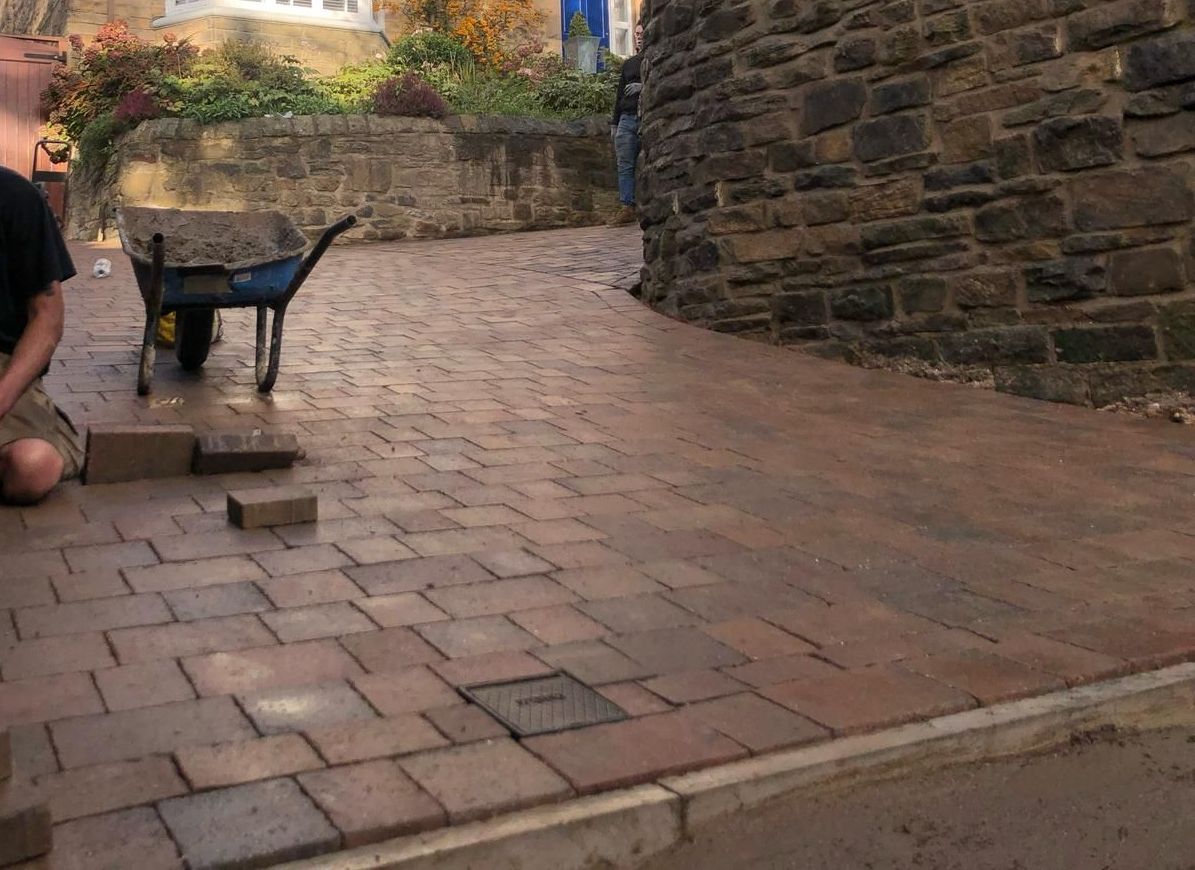Pattern Imprinted Concrete vs. Traditional Paving: Which Is Best for You?
Imprinted Concrete compared to Block Paving

Choosing the right paving option for your outdoor spaces is a significant decision that affects not only aesthetics but also functionality, durability, and maintenance. Among the myriad of choices available, pattern imprinted concrete (PIC) and traditional paving methods such as bricks, stones, and slabs stand out for their popularity. However, each comes with its own set of advantages and disadvantages. In this blog post, we will explore the differences between pattern imprinted concrete and traditional paving to help you decide which is best for you.
Understanding Pattern Imprinted Concrete
Pattern imprinted concrete is a method of creating a decorative surface by pouring concrete and then imprinting it with molds to resemble different textures, such as stone, brick, or slate. This technique allows for remarkable versatility in design, enabling property owners to achieve various aesthetic effects without compromising the strength and durability inherent in concrete.
Advantages of Pattern Imprinted Concrete
1. Aesthetic Appeal: One of the most compelling reasons to choose pattern imprinted concrete is its aesthetics. Available in a wide range of colors and designs, it can mimic natural materials like stone or brick with remarkable fidelity. This flexibility allows you to achieve the look of your dreams while maintaining a cohesive design throughout your property.
2. Low Maintenance: Compared to traditional paving options, pattern imprinted concrete is easier to maintain. It is resistant to weeds, insects, and mold, requiring far less upkeep than natural stone or paving bricks. A simple occasional wash with a hose and soap is usually enough to keep it looking fresh.
3. Durability: When installed correctly, pattern imprinted concrete can last for decades. It can withstand heavy traffic, weather extremes, and other forms of wear and tear, making it suitable for driveways, patios, and walkways.
4. Seamless Installation: Unlike traditional block paving, which can involve the complicated process of arranging and fitting countless bricks or stones, pattern imprinted concrete is poured as a single slab, leading to fewer seams and joints. This reduces potential weak points and increases longevity.
The Case for Traditional Paving
Traditional paving techniques include materials like bricks, cobblestones, and natural stones. Each one carries its own charm and benefits.
Advantages of Traditional Paving
1. Natural Beauty: Many homeowners appreciate the authentic look and feel of traditional paving materials. Whether you choose natural stone or handcrafted bricks, the unique finishes and imperfections of natural materials often lend an irreplaceable character to your outdoor space.
2. Easier Repairs: If a section of traditional paving becomes damaged, individual bricks or stones can be replaced without impacting the surrounding area. This makes repairs generally less labor-intensive and more cost-effective compared to pattern imprinted concrete, which may require entire sections to be redone if damage occurs.
3. Drainage: Traditional paving options often offer better water drainage. Gaps between bricks or stones allow water to seep through, reducing pooling and promoting more natural water absorption into the ground. In contrast, while pattern imprinted concrete can be designed to manage water, it is more prone to pooling.
4. Sustainability: Natural stone and bricks can be more environmentally friendly options, especially if sourced locally. They also have a lower carbon footprint in certain contexts, as producing concrete can involve significant energy consumption.
Considerations for Choosing Between the Two
When deciding between pattern imprinted concrete and traditional paving, there are several factors to consider:
1. Budget: Your available budget will heavily influence your decision. Generally, the installation cost of pattern imprinted concrete may be higher upfront due to the need for skilled labor and specialized materials, but its durability can lead to long-term savings on maintenance and repairs. Traditional paving may have lower initial costs, especially if DIY, but can lead to higher maintenance costs down the line.
2. Purpose: Consider the primary function of the paved area. If you need a durable surface that can handle heavy vehicles, pattern imprinted concrete might be preferable. However, if aesthetics and drainage are priorities, traditional paving might make more sense.
3. Climate and Environment: If you live in a region with extreme temperature fluctuations, consider how each material will perform under such conditions. While pattern imprinted concrete can crack in severe freeze-thaw cycles, traditional materials may fare better due to their natural composition.
4. Longevity and Investment Value: Think about how long you plan to stay in your home. If you're investing for resale value, the high visual appeal coupled with low maintenance of pattern imprinted concrete could be advantageous.
Making the Right Choice
The decision between pattern imprinted concrete and traditional paving boils down to your individual preferences, budget, and long-term goals. Both options offer distinct advantages and disadvantages, making it essential to evaluate what aligns best with your needs.
If you prefer seamless aesthetics, easy maintenance, and durable surfaces, pattern imprinted concrete might be your best bet. Conversely, if you value natural beauty, authenticity of block paving with a little more ongoing maintenance then this many be the best option for you.

